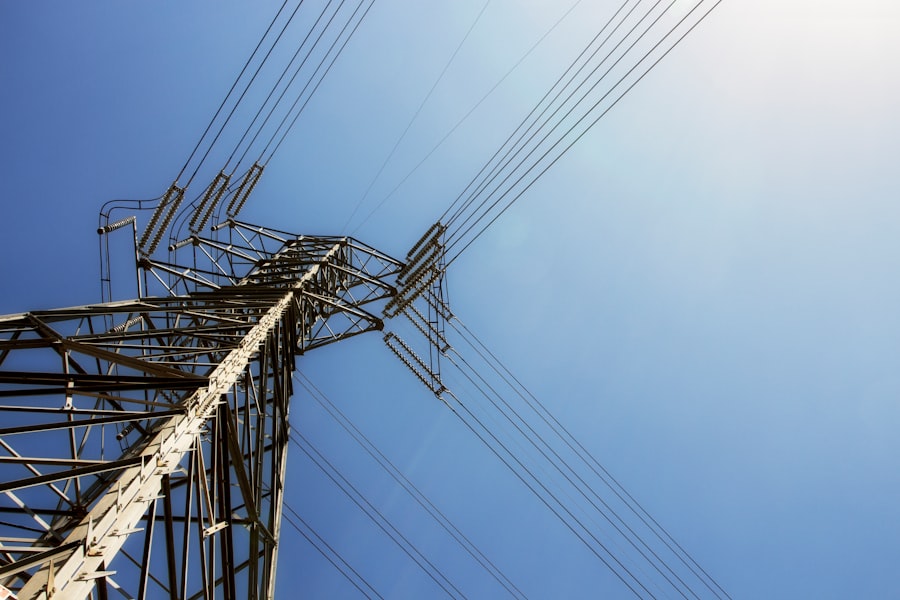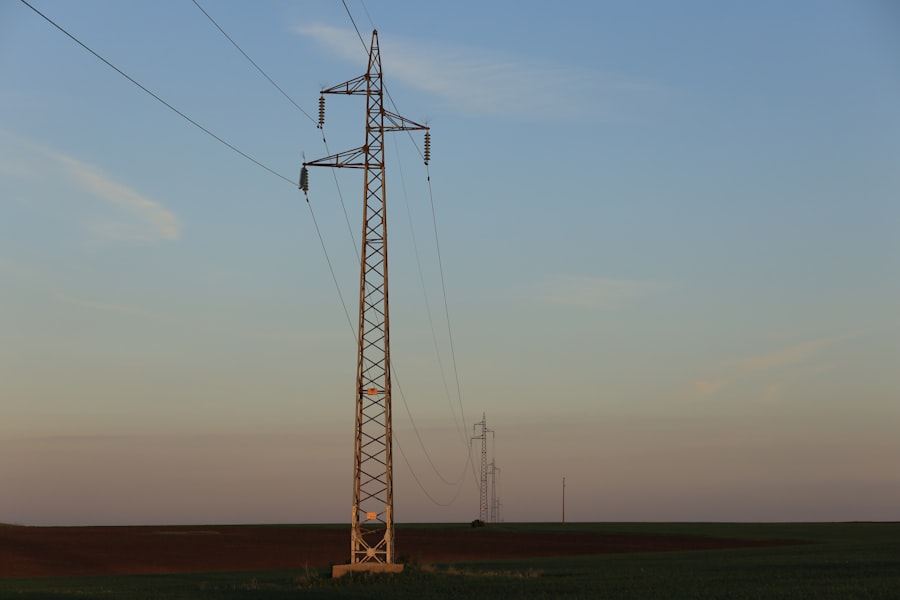As the world grapples with the pressing challenges of climate change and environmental degradation, the future of renewable energy emerges as a beacon of hope. The transition from fossil fuels to sustainable energy sources is not merely a trend; it is an imperative that nations must embrace to ensure a livable planet for future generations. The urgency of this transition is underscored by the increasing frequency of extreme weather events, rising sea levels, and the depletion of natural resources.
Renewable energy, derived from inexhaustible sources such as sunlight, wind, and water, offers a viable solution to mitigate these issues while fostering economic growth and energy independence. As we look ahead, it becomes clear that the evolution of renewable energy technologies will play a pivotal role in shaping a sustainable future. The future landscape of renewable energy is characterized by innovation and collaboration across various sectors.
Governments, private enterprises, and research institutions are increasingly investing in clean energy technologies, recognizing their potential to drive economic development while addressing environmental concerns. This collective effort is not only aimed at reducing greenhouse gas emissions but also at creating resilient energy systems that can withstand the challenges posed by climate change. As we delve deeper into the various facets of renewable energy, it becomes evident that emerging technologies, bioenergy, geothermal energy, hydroelectric power, tidal and wave energy, and the integration of these sources will be instrumental in crafting a sustainable energy future.
Key Takeaways
- Renewable energy is the future of sustainable energy production, offering a clean and abundant source of power.
- Emerging technologies such as solar panels, wind turbines, and energy storage systems are revolutionizing the renewable energy sector.
- Bioenergy, derived from organic materials, has the potential to play a significant role in the future of renewable energy production.
- Geothermal energy, harnessing heat from the earth’s core, offers a promising and reliable source of renewable power.
- Advancements in hydroelectric power, including new turbine designs and improved efficiency, are making it an increasingly viable renewable energy option.
Emerging Technologies in Renewable Energy
Advancements in Solar Energy
The realm of renewable energy is witnessing a surge in innovative technologies that promise to revolutionize how we harness and utilize clean energy. One of the most significant advancements is in solar energy, where photovoltaic cells are becoming increasingly efficient and affordable. The development of perovskite solar cells, for instance, has shown remarkable potential in enhancing energy conversion rates while reducing production costs.
Expanding Applications and Integration
These advancements not only make solar power more accessible but also pave the way for its integration into various applications, from residential rooftops to large-scale solar farms. Furthermore, the advent of solar tracking systems allows panels to follow the sun’s trajectory throughout the day, maximizing energy capture and efficiency.
Wind Energy Innovations and AI Integration
Wind energy technology is also evolving rapidly, with innovations such as floating wind turbines and advanced turbine designs that can operate in lower wind speeds. These developments expand the geographical range where wind farms can be established, opening up new opportunities for harnessing wind power in regions previously deemed unsuitable. Additionally, the integration of artificial intelligence and machine learning into energy management systems enhances predictive maintenance and optimizes energy output.
A Decentralized and Resilient Energy Grid
As these technologies continue to mature, they will not only increase the efficiency and reliability of renewable energy sources but also contribute to a more decentralized and resilient energy grid.
The Role of Bioenergy in the Future of Renewable Energy

Bioenergy stands out as a versatile component of the renewable energy landscape, offering a unique blend of sustainability and practicality. Derived from organic materials such as plant matter, agricultural residues, and even waste products, bioenergy can be converted into electricity, heat, or biofuels. This adaptability makes it an attractive option for diversifying energy portfolios and reducing reliance on fossil fuels.
Moreover, bioenergy has the potential to contribute significantly to carbon neutrality by utilizing carbon dioxide absorbed by plants during their growth cycle. As such, it plays a crucial role in mitigating climate change while providing a reliable source of energy. The future of bioenergy is further enhanced by advancements in technology that improve conversion processes and increase efficiency.
Innovations such as anaerobic digestion and gasification are enabling the transformation of organic waste into valuable energy resources while simultaneously addressing waste management challenges. Additionally, research into second and third-generation biofuels—derived from non-food crops or waste materials—promises to alleviate concerns regarding food security associated with first-generation biofuels. As bioenergy continues to evolve, its integration into existing energy systems will be vital for achieving a balanced and sustainable energy mix that meets global demands.
The Potential of Geothermal Energy
Geothermal energy represents a largely untapped resource with immense potential for contributing to a sustainable energy future. Harnessed from the Earth’s internal heat, geothermal power can provide a consistent and reliable source of energy that is not subject to the fluctuations often seen with solar or wind power. This stability makes geothermal energy particularly appealing for baseload power generation, ensuring a continuous supply of electricity regardless of weather conditions or time of day.
Countries with significant geothermal resources, such as Iceland and the Philippines, have already demonstrated its viability as a cornerstone of their energy strategies. The advancements in geothermal technology are expanding its applicability beyond traditional geothermal power plants. Enhanced geothermal systems (EGS) are being developed to extract heat from deeper geological formations that were previously inaccessible.
This innovation could significantly increase the number of locations suitable for geothermal energy production, thereby broadening its global reach. Additionally, geothermal heat pumps are gaining traction for residential heating and cooling applications, providing an efficient alternative to conventional HVAC systems. As awareness grows regarding the benefits of geothermal energy—such as low emissions and minimal land use—its role in the renewable energy landscape is poised to expand dramatically.
The Advancements in Hydroelectric Power
Hydroelectric power has long been recognized as one of the most established forms of renewable energy, yet it continues to evolve through technological advancements and innovative practices. Traditional hydroelectric plants harness the kinetic energy of flowing water to generate electricity; however, modern developments are focusing on improving efficiency and minimizing environmental impacts. For instance, small-scale hydroelectric systems are being deployed in rivers and streams where large dams would be impractical or ecologically disruptive.
These micro-hydropower solutions provide localized energy generation while preserving aquatic ecosystems. Moreover, advancements in turbine technology are enhancing the performance of existing hydroelectric facilities. The introduction of fish-friendly turbines aims to mitigate the impact on aquatic life while maintaining high levels of efficiency.
Additionally, pumped storage hydroelectricity is gaining attention as a means of balancing supply and demand on the grid by storing excess energy generated during peak production times for later use during high demand periods. As hydroelectric power continues to adapt to contemporary challenges, it remains a vital component of a diversified renewable energy portfolio that can support global sustainability goals.
The Promise of Tidal and Wave Energy

Tidal and wave energy represent some of the most promising yet underutilized forms of renewable energy available today. These ocean-based resources harness the natural movements of water—whether through tidal currents or surface waves—to generate electricity. The predictability of tidal patterns offers a significant advantage over other renewable sources; unlike solar or wind power, tidal energy can be forecasted with remarkable accuracy, allowing for better integration into existing power grids.
Countries with extensive coastlines are beginning to explore this potential more seriously as they seek to diversify their energy sources. Recent technological innovations are paving the way for more efficient capture and conversion methods for tidal and wave energy. For instance, advancements in turbine design have led to more effective underwater turbines that can operate in varying water conditions while minimizing environmental disruption.
Additionally, wave energy converters are being developed to harness the kinetic energy from surface waves without requiring large infrastructure investments typical of traditional hydroelectric projects. As research continues to advance in this field, tidal and wave energy could emerge as critical components in achieving global renewable energy targets.
The Integration of Renewable Energy Sources for a Sustainable Future
The integration of various renewable energy sources is essential for creating a sustainable future that meets growing global demands while minimizing environmental impacts. A diversified approach allows for greater resilience against fluctuations in supply and demand while optimizing resource utilization across different regions. For instance, combining solar and wind power can help balance out their intermittent nature; when sunlight wanes during cloudy days or at night, wind patterns may still provide sufficient electricity generation.
This synergy not only enhances grid stability but also reduces reliance on fossil fuel backup systems. Moreover, advancements in smart grid technology are facilitating this integration by enabling real-time monitoring and management of diverse energy sources. Energy storage solutions such as batteries are becoming increasingly vital in this context; they allow excess renewable energy generated during peak production times to be stored for later use when demand surges or production dips.
As countries invest in infrastructure that supports this interconnectedness among renewable sources—alongside policies that promote sustainability—the vision for a cleaner, more resilient global energy landscape becomes increasingly attainable. The collaborative efforts across sectors will ultimately determine how effectively we can transition toward a sustainable future powered by renewable energies.
While exploring the future of renewable energy, it’s essential to consider the technological tools that support research and development in this field. An interesting resource that discusses the best laptops for kids in 2023 can be found at Enicomp. This article is particularly relevant as it highlights the importance of equipping the younger generation with suitable technology that can aid in their education about renewable energy solutions, potentially inspiring future innovations in areas beyond solar and wind power.
FAQs
What is renewable energy?
Renewable energy is energy that is collected from renewable resources, which are naturally replenished on a human timescale, such as sunlight, wind, rain, tides, waves, and geothermal heat.
What are some examples of renewable energy sources beyond solar and wind power?
Some examples of renewable energy sources beyond solar and wind power include hydroelectric power, biomass energy, geothermal energy, and ocean energy (tidal, wave, and ocean thermal energy).
How does hydroelectric power work as a renewable energy source?
Hydroelectric power is generated by harnessing the energy of flowing or falling water. This is typically achieved by building a dam on a river to create a reservoir of water, which is then released to drive turbines and generate electricity.
What is biomass energy and how is it used as a renewable energy source?
Biomass energy is derived from organic materials, such as wood, agricultural crops, and waste. It can be used to produce heat, electricity, or biofuels through processes like combustion, gasification, and anaerobic digestion.
How is geothermal energy harnessed as a renewable energy source?
Geothermal energy is harnessed by tapping into the heat stored beneath the Earth’s surface. This heat can be used directly for heating buildings or for generating electricity through geothermal power plants.
What are the potential benefits of expanding beyond solar and wind power for renewable energy?
Expanding beyond solar and wind power can help diversify the renewable energy mix, reduce reliance on intermittent energy sources, and provide opportunities for energy generation in regions with different natural resources. This can contribute to a more resilient and sustainable energy system.

